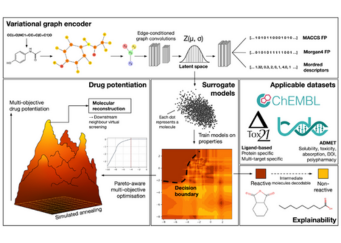Leveraging NSCC’s supercomputing resources to unravel the underlying physics in complex flows.
The study of flow instability determines how an undisturbed flow transitions to turbulence, a topic which is very important for both industry application and academic research. For example, delayed transition to turbulence will reduce skin drag on airplane wings and thus can significantly decrease energy consumption, which is essential for aerodynamic efficiency and performance. Similarly, a minute amount of polymers added in a certain solution can lead to a remarkable skin drag reduction of up to 80%. These phenomena are actively investigated in a research team led by Mengqi Zhang, Principal Investigator from the Department of Mechanical Engineering, NUS.
In studying the flow instability and its subsequent development, the team carries out advanced stability analyses and conducts high-fidelity direct numerical simulations. The linear stability theory is particularly useful in approximating and elucidating the dynamics of dominant flow structures in transition to turbulence, which is essentially a non-linear problem. The full and exact solution requires a case-by-case computational solving of the Navier-Stokes equation, the governing law for all fluid motions.
“Due to the complexity of transitional and turbulent flows, advanced and highly accurate Computational Fluid Dynamics (CFD) simulations are indispensable and important for our project since it allows problems to be tackled within realistic time scales and provides the details that are hard to obtain in experimental investigations,” said Wenjun Yuan, a senior research fellow in Mengqi’s research team.
In order to cover the research fields on flow instability phenomena within non-Newtonian fluids and electrohydrodynamics, and also machine-learning based techniques for flow control problems, Mengqi and team tap on NSCC’s high performance computing resources. “With high-speed supercomputers (HPC), better solutions can be achieved and are often required to solve the largest and most complex problems. NSCC’s HPC resources made the simulations efficient and fast as the team relied on distributed memory parallelism, shared memory parallelism, vectorization and memory access optimisations,” said Wenjun.
To find out more about the NSCC’s HPC resources and how you can tap on them, please contact [email protected].
NSCC NewsBytes July 2020
Other Case Studies
Using Digital Twin Technology to Optimise the Industrial 3D Printing Process
Researchers from the Institute of High-Performance Computing (IHPC) are utilizing supercomputers to create a digital twin that furnishes users with comprehensive information...
Accelerating electric vehicles research through HPC
Researchers from A*STAR IHPC leverage supercomputing resources to improve the performance of lithium-ion battery technology With the ever-increasing demand in energy storage...
Advancing Drug Discovery Research using NSCC HPC resources
Researchers from Nanyang Technological University (NTU) are applying variational graph encoders as an effective generalist algorithm in computer-aided drug design (CADD)....


